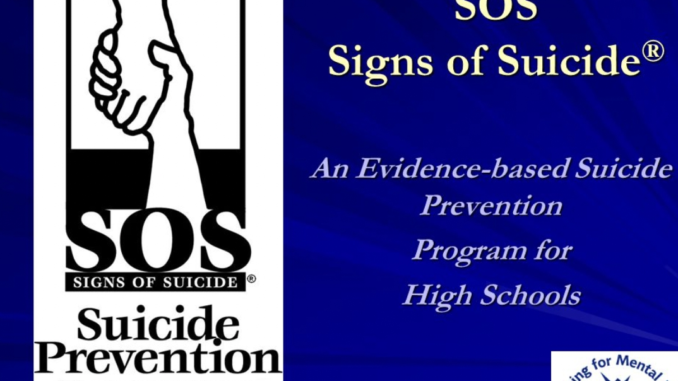
By Tara Khaleghian
Staff Writer
On Jan. 23, second period homeroom teachers were required to show the first Signs of Suicide (SOS) lesson of the year with the goal of spreading suicide awareness. The skits incorporated in the SOS video felt unnatural and the scripted acting was not representative of real situations. The video felt disingenuous and nonserious, demonstrating the need for the elimination or revision of the SOS program.
In the state of California, suicide prevention programs are required for all public schools in grades 7-12, which is why Costa began implementing SOS among 9th-12th graders seven years ago. Teachers are instructed to show a video on suicide prevention, and once the video ends, to hand out two brief surveys. The goals of the SOS lessons are to teach students how to identify warning signs of suicide, spread awarness about how to prevent suicide, and provide resources to struggling individuals.
During the first few minutes of the video, personal experiences of mental health struggles were shared. However, as a viewer, it felt awkward when such a serious topic was translated into an unrealistic skit. These clearly scripted scenes diminish the purpose and meaning of suicide prevention.
Furthermore, the editors of the SOS video did not take into consideration the potential reactions that the skits would bring to high school students. The video makers intended for the skits to provide examples of appropriate reactions to a friend showing signs of self-harm. Even though the intentions of the video were not harmful, the skits made some students question the topic’s severity. The reenactment of a serious scenario, such as suicide, should be dealt with cautiously because, when not executed properly, it could seem as if the video is ridiculing the situation.
Not only does a poorly acted scenario make the circumstances feel mocked, but it may make students feel awkward and uncomfortable.
Although some may argue that video makers intended for the skits to act as a learning example for managing mental health, they fail to feel as serious as intended in a student environment. Costa should update its approach, especially when addressing the increasingly prevalent topic of mental health awareness. Skits included in the SOS program should ensure that this topic is presented as seriously as it is intended to be. Program researchers should consider replacing skits with an individual activity that students do independently, rather than a general video that is meant to apply for everyone, in an effort to be more inclusive of various perspectives on the topic of suicide.
The California Department of Education website has provided a list of resources for school districts to help address the need for youth suicide prevention, intervention, and postvention. Currently, Costa is using the SOS program, even though there are over 22 resources available for access to California school districts. An alternative video would be beneficial to the student body when it comes to proper interpretation.With the additional resources provided by the state, Costa can and should explore other options for the coming years.
Overall, it is paramount to address the serious topic that is mental health. However, it must be done in an authentic way to ensure solemnity. Costa’s attempt to teach emotional well-being is to be commended, however alternative or individualized activities may be more beneficial to incorporate in future implementations.

Leave a Reply